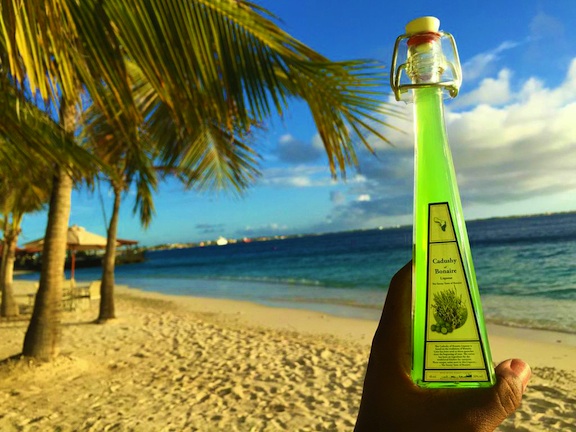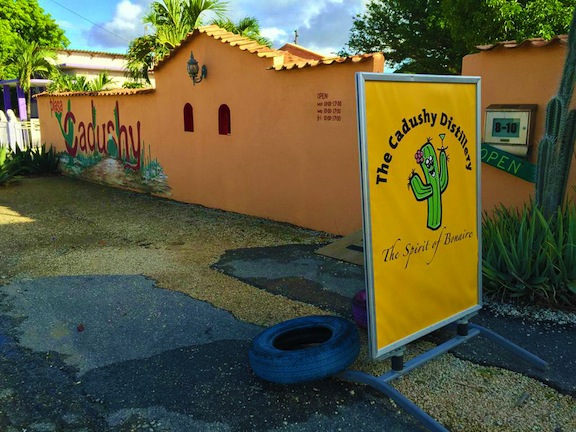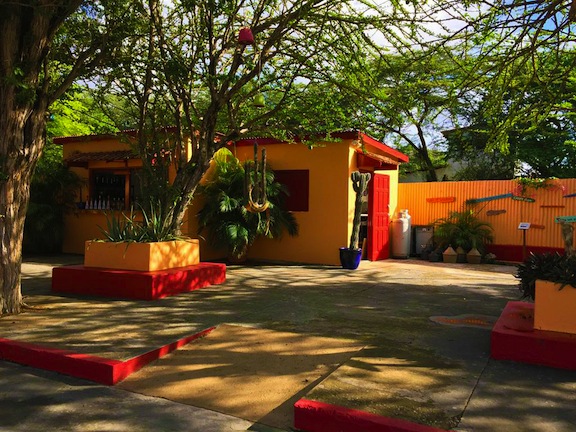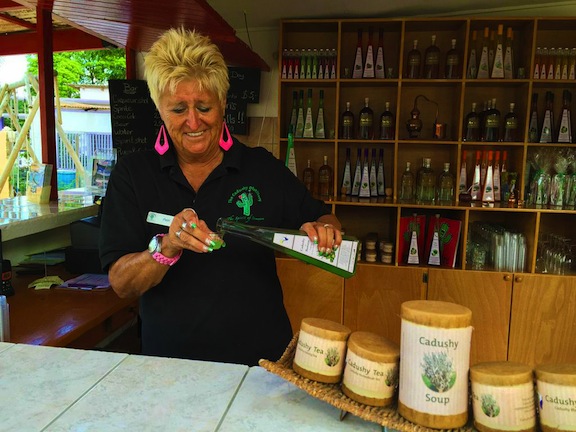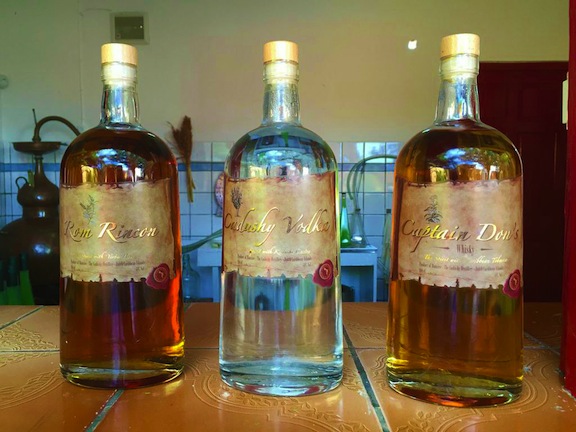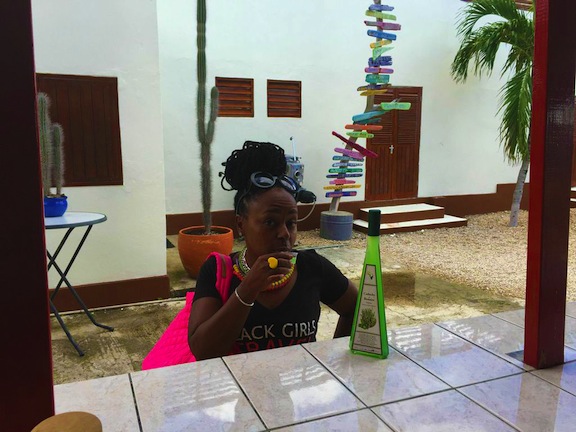By Sarah Greaves-Gabbadon
CJ Travel Editor
“Have you ever tried drinking a cactus?” the tour guide asks, knowing full well what my answer will be.
But I’m here at Cadushy of Bonaire, where they make a liqueur of the same name from the Dutch Caribbean island’s Kadushi cactus, to remedy that situation.
In the town of Rincon, about 20 minutes’ drive from the capital of Kralendijk, the “factory” is tiny, and you can pretty much see the entire four-year-old operation through the metal gate; just a couple of open-front buildings in a small concrete courtyard embellished with cactus plants and brightly painted signs.
The complimentary tour – “It’s really just an explanation,” my guide, Petri says wryly. “I don’t use a megaphone and we don’t need a golf cart.” – only takes about 10 minutes, during which Petri tells me how the unique spirit is made.
Basically the cactus is peeled and the membrane just underneath the outer skin cut into strips and put into an aluminum baking pan. The pan of peel is transferred to a “highly sophisticated dehydrator” (the dashboard of the Cadushy pickup truck), where it bakes in the sun for two days. Islanders traditionally use dried peel to make cactus tea, soup and as a natural remedy, but the distillery combines the strips with yeast and sorghum, the only grain that grows on the arid isle. After two weeks the mixture is distilled twice and becomes the 80 proof alcohol base of all Cadushy products, which include not only the cactus liqueur.
There’s a cactus vodka (described as “smooth with a spiny character”); Captain Don whiskey, made with bourbon, rye and scotch aged with Cuban tobacco leaves in French oak barrels; and Rum Rincon, made with Suriname molasses and local wild basil. There’s also a collection of five other Dutch Caribbean-themed liqueurs, but the cactus is only used in the vodka and its namesake, Cadushy.
Which is the neon green liquid in the tiny plastic cup I’m now bringing gingerly to my lips. It tastes simultaneously sweet, herbal, floral and aromatic. It tastes … well … green. I’m not sure that I’d drink it neat, but I can see how, just like its cousin Blue Curacao, it would work well in a cocktail. I get out my credit card and pay for a bottle to take home. Truth is, I may never even open it. But that doesn’t really matter. Because at least now I can say that I’ve drunk a cactus.
Cadushy of Bonaire costs $25 for a 500ml bottle, and is sold exclusively on Bonaire. A 40 ml miniature is $12, and fits neatly in your quart-sized Ziploc, so even travelers who never check a bag can indulge (responsibly) in the island spirit.
